The word “heritage” suggests the history and traditions of a particular group of people: a concept that at first glance seems distant from geology, or the study of the earth.
However, through Pennsylvania’s preservation of and public education on heritage geology sites, these ideas are shown to be more closely related than many people are aware.
In addition to teaching us about geology, heritage sites help us to make connections between our lives and science, history, and the natural world.
Pennsylvania Heritage Geology Sites
The Department of Conservation and Natural Resources’
Bureau of Geological Survey promotes heritage geology sites.
Some of the best examples of heritage geology sites are included in the Pennsylvania Geological Survey’s Trail of Geology series.
In Pennsylvania, heritage geology sites are designated based on seven values:
Scenic Value
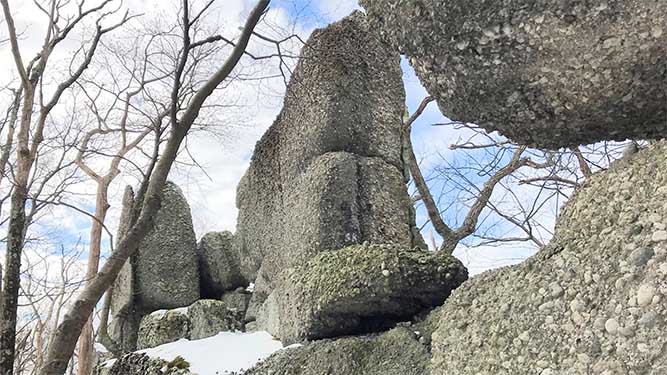
Scenic value refers to the excellence and beauty of a natural landscape.
An example of exceptional scenic value is the
Chinese Wall (PDF), commonly referred to as High Rocks or Boxcar Rocks, in Lebanon and Schuylkill counties.
The “wall” is a 60-feet high by half-mile long outcrop of “conglomerate” -- a coarse-grained sedimentary rock composed of rounded rock fragments that are cemented together by a matrix of finer grained material.
Educational/Scientific Value
Educational/scientific value refers to how well a feature represents the nature and development of geological systems in that region.
A site is considered “educational or scientific” if it can be used as a teaching resource to illustrate geologic concepts, is prominent in scientific papers, or represents a site of important measurement or discovery.
An iconic educational/scientific value site for geology instructors is the
Blue Mountain Anticline (PDF) where the folding of rocks is exposed along U.S. Route 22/322 in Juniata County.
Recreational Value
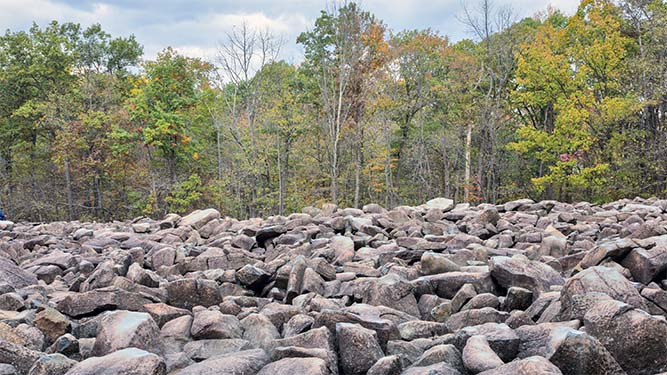
Recreational value refers to how often a site is used for recreation.
The
Ringing Rocks (PDF) in Bucks County is a popular hiking spot for all ages.
Ringing Rocks hosts one of the largest assemblages of igneous boulders in the eastern United States.
This boulder field is called “Ringing Rocks” because roughly one in six of the boulders produces a musical ringing sound when struck with a hammer.
Social/Historical Value
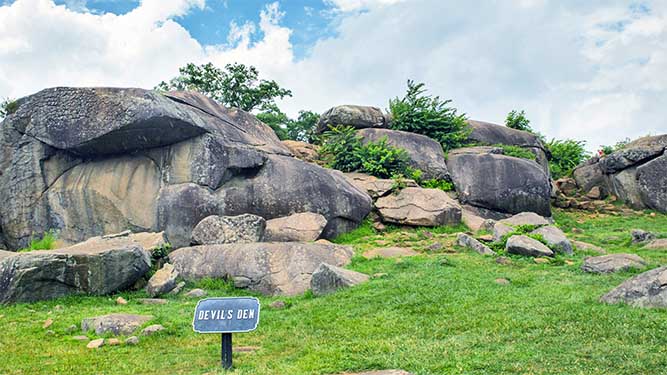
Social/historical value refers to the degree to which a feature has played a role in the life or development of past or present human communities.
Devils Den (PDF) in Gettysburg exemplifies this value because of the role it played in the Battle of Gettysburg during the Civil War.
During the battle, Confederate soldiers used the large volcanic rocks as cover.
As a result, the Union army was unable to entrench itself in a fortified position.
While the Union army did go on to win this battle, they had a disproportionate number of casualties as a result of this feature.
Sense of Place
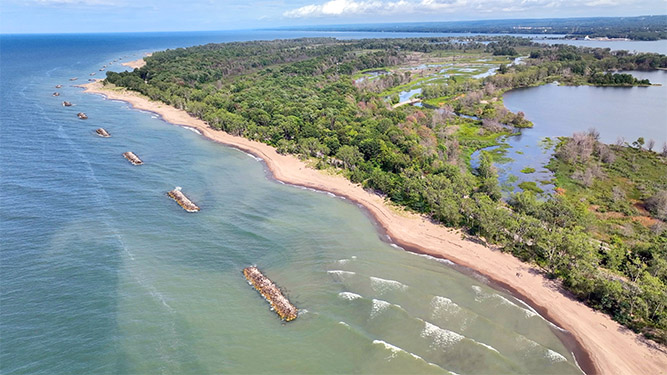
Sense of place refers to the importance a feature plays with regards to the identity of a community.
Presque Isle (PDF) is a great example of a feature that helps shape the history, identity, and current landscape of a region.
People from all over Pennsylvania recognize the silhouette of this “almost island,” and local geologists know that this is one of the best places in the state to observe coastal geological processes in action.
Significance
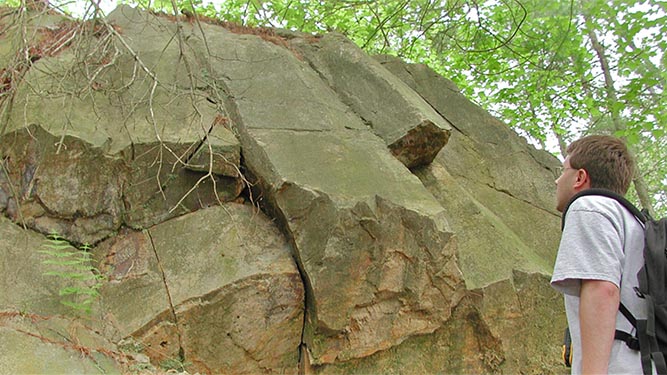
Significance refers to the degree a feature exemplifies an aspect of geodiversity that is rare, unique, an exceptional example, or otherwise of special importance.
The
columnar jointed volcanics (PDF) of Adams County are a rare feature for Pennsylvania.
These forms represent shrinkage and cooling associated with volcanic activity -- something the state hasn’t seen for more than 180 million years!
Conservation
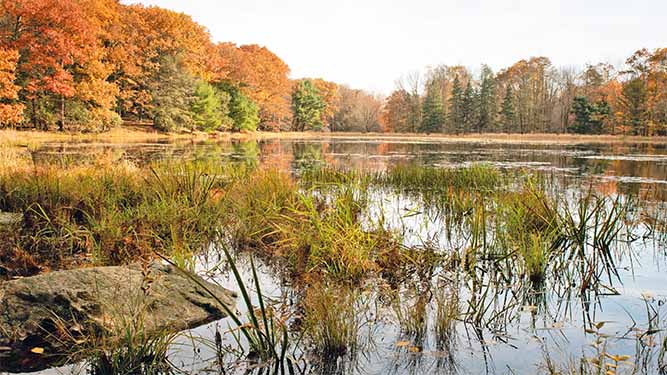
Conservation refers to a feature’s inherent natural value that is sensitive to change and worth protecting.
Lake Lacawac (PDF) in northeastern Pennsylvania is the southernmost glacial lake in the northern hemisphere.
Because of its pristine condition, Lake Lacawac was designated as a registered National Natural Landmark and is home to the
Pennsylvania Wild Plant and Lacawac Sanctuaries.
Pennsylvania’s geological heritage sites are places where geology, history, and culture intersect. So, how can you plan such a trip
Plan a Visit to a Heritage Geology Site
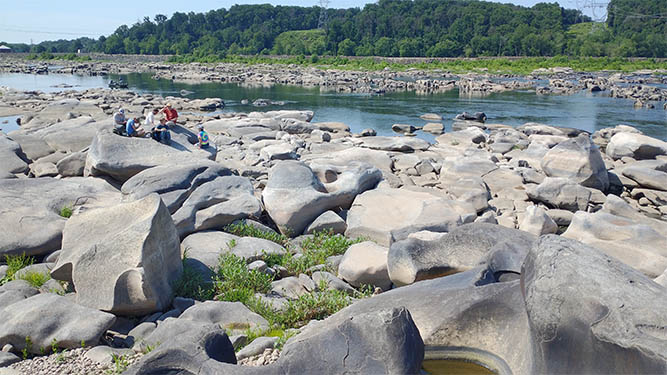
The Pennsylvania Geologic Data Exploration (PaGEODE) GIS map can help you identify some of the coolest geological features in your area.
To identify geological heritage sites near you:
- Go to
PaGEODE
- Select the “Layers” dropdown and click “Trail of Geology.” This will bring up icons representing all the outstanding geological features in Pennsylvania.
- Find a feature near you and click on the icon. This will bring up the Trail of Geology article that explains the geologic significance of the feature. It also provides driving instructions.
Pack water and sunscreen, grab some friends and family, have a wonderful time visiting Pennsylvania’s Heritage Geology sites!